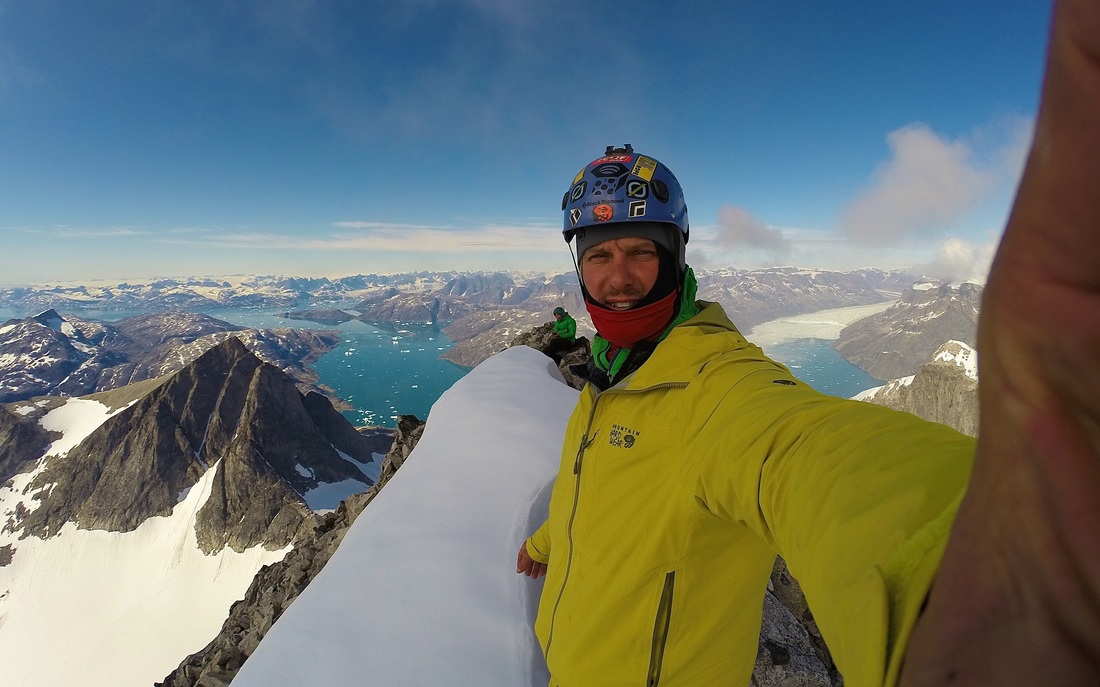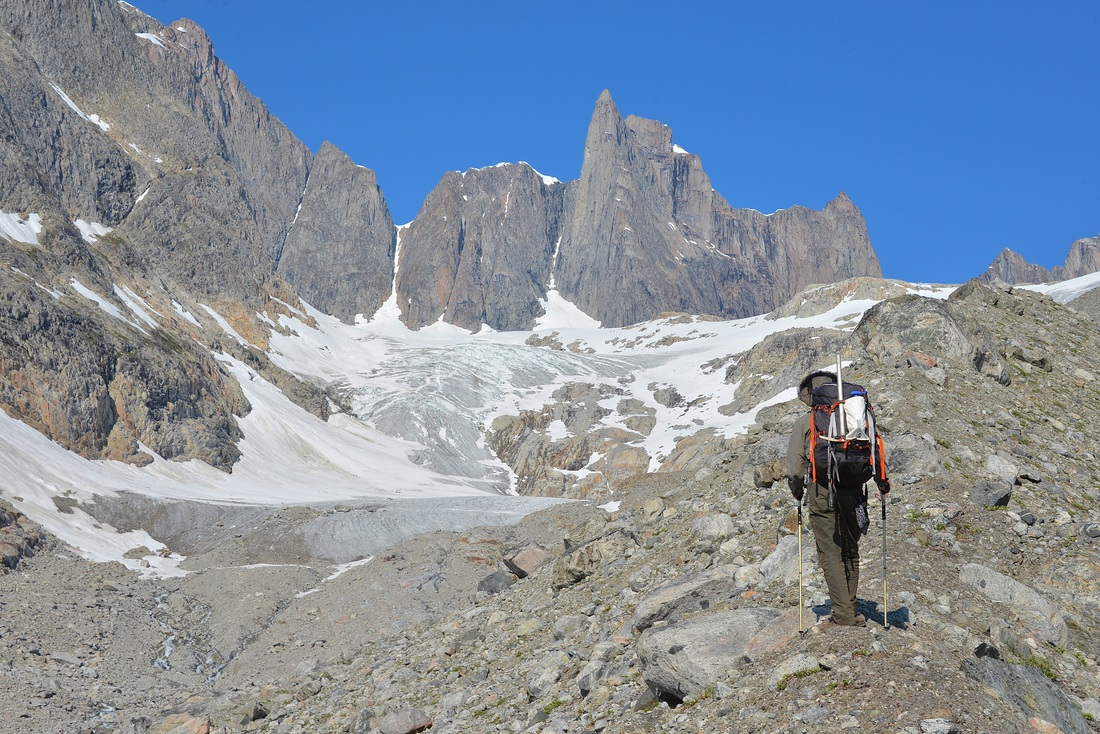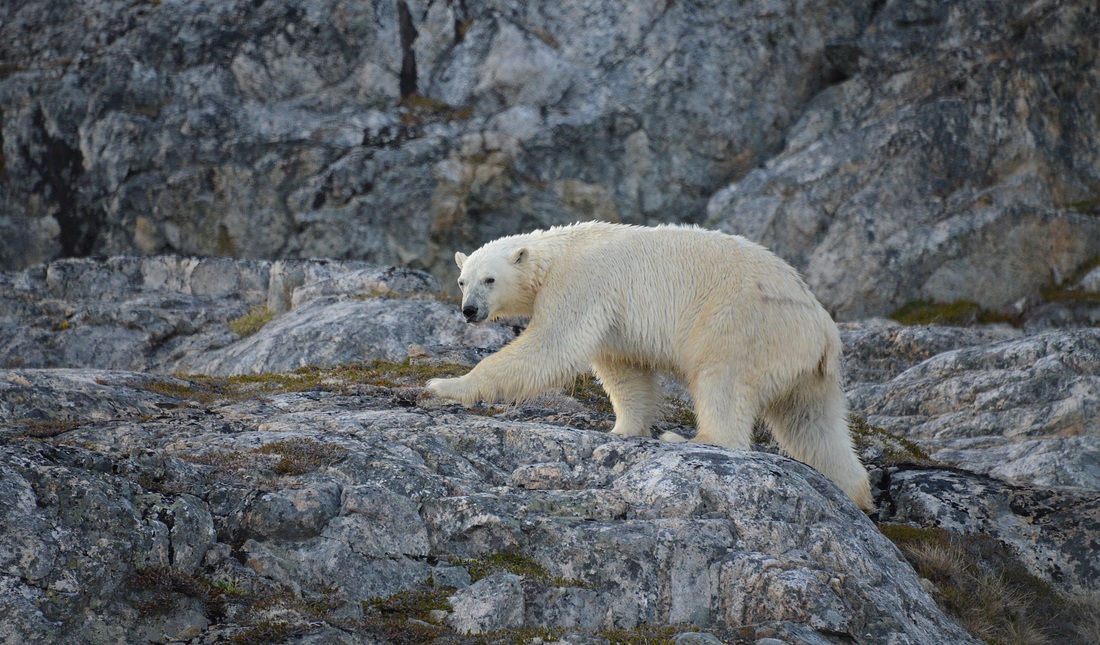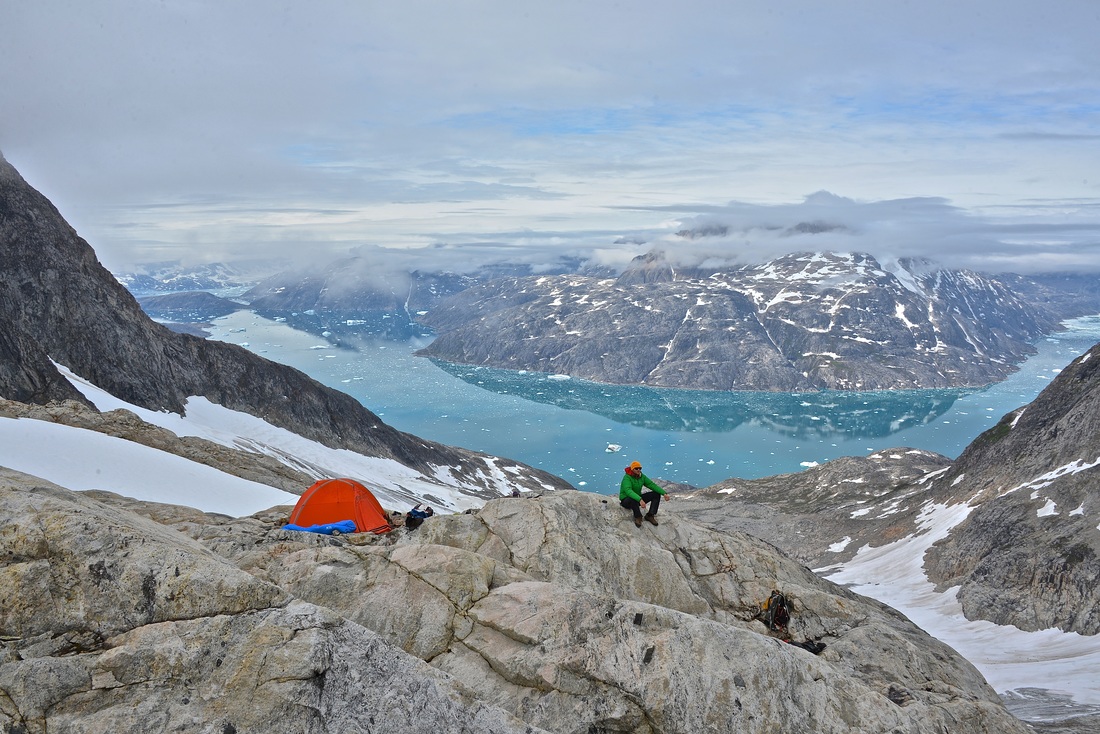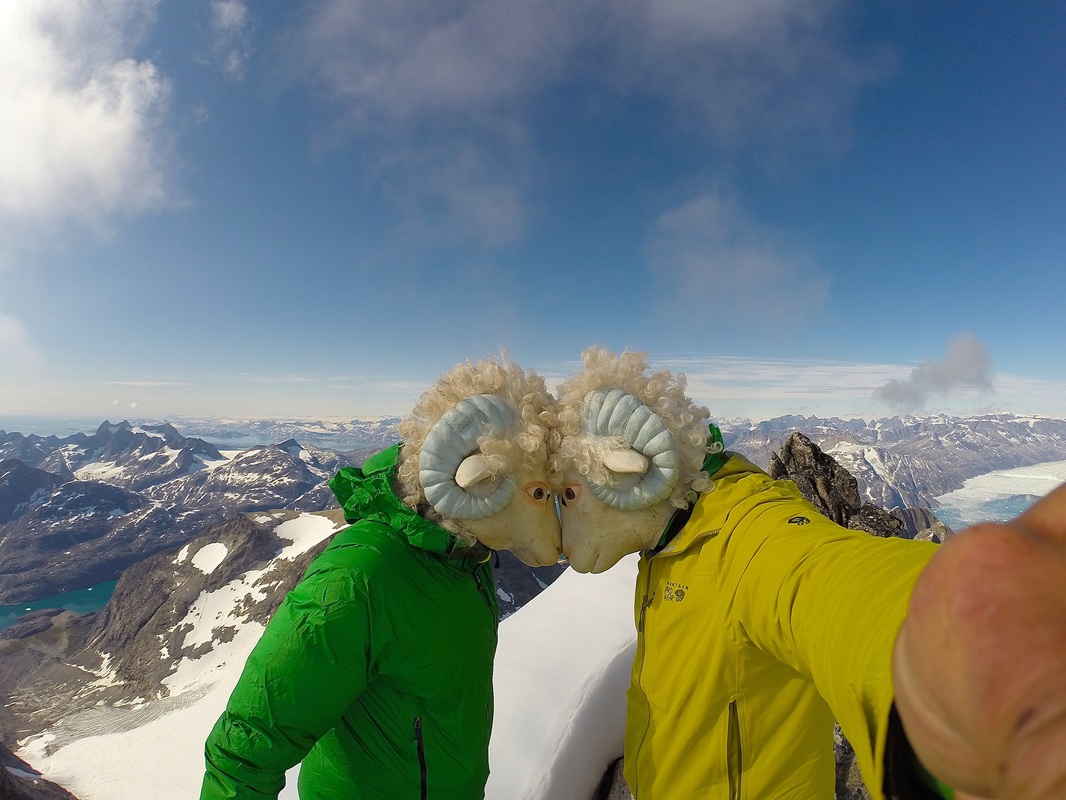ASC Adventurer
It was close to 1 a.m., and the midnight sun was hiding behind the massive mountains surrounding us. Before dropping us off, our captain sailed back and forth looking for polar bears. Last time I was here, there were 11 in the area, but the coast was clear, so he dropped us on the rocky shore.
Andy doesn’t have much experience on technical mountain terrain—in fact this would be his third climb ever—but I knew he had the focus, determination and communication skills needed. He had followed me up a big wall in China’s Tien Shan in 2005, and up a huge route on Asan in the Karavshin, Kyrgyzstan, in 2006. We had fun. We laughed. It’s a beautiful thing sharing grand adventures as brothers. On this trip, I would again rely on the energy of our brotherhood, our blood, to generate the optimism to keep us safe.
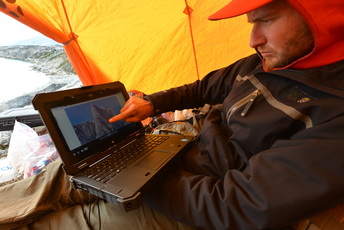 Mike logs data and images on a Dell Rugged Extreme, a laptop he calls “expedition-worthy.”
Mike logs data and images on a Dell Rugged Extreme, a laptop he calls “expedition-worthy.”
A recon revealed a simple scramble with one rappel to reach the glacier between camp and the tower, and the glacier proved surprisingly easy to traverse. From the base, most of the rock low on the tower appeared loose, but after a few hours of scoping, I found a few routes that looked somewhat safe. Back at high camp, I spent time searching the face with my zoom lens and began remapping our route. Honestly, this was no place for a beginner, let alone someone on their third climb ever. Brotherhood, blood, bond, belief.
It started snowing and we took advantage of a couple stormy rest days, ate a lot, and read books. The best part of the storm was having extra time to Skype with my daughter. Yes, that’s right, Skype video calls from one of the most remote areas on the planet.
Once the sun emerged, we racked up and headed to the base of the tower. I brought the satellite phone—a first for me. At least Andy would have some kind of fighting chance if something happened up there. We started our push the following morning after sleeping at the base of the tower. I planned to free climb the entire route, while Andy would follow by ascending the rope. Before we got in our bivy sacs, I climbed a pitch and had him clean it for a refresher. He accomplished the task with ease.
For food, we took only Clif Bars, Shots and Bloks, and three liters of water. I led with two ropes and a double rack of cams and nuts, a few hexes, a hammer, six pitons, four bird beaks, and two alpine aiders. Andy followed with the food and emergency gear.
We started in light fog and clouds. By the third pitch, huge, hanging daggers of rock had forced me off my planned route. The terrain unfolded with fun, well-protected climbing. I focused on how the rope would run for Andy’s safety, using up a few extra hours to prevent him from pulling loose rock on top of himself.
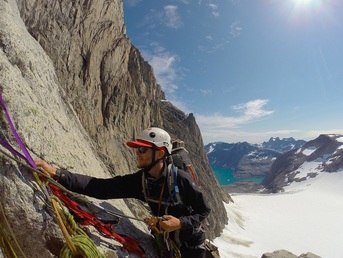 Andy gets ready at the base of the tower, which the brothers climbed alpine style with three open bivies, Mike leading all the pitches. They brought only minimal gear, Clif Bars and enthusiasm.
Andy gets ready at the base of the tower, which the brothers climbed alpine style with three open bivies, Mike leading all the pitches. They brought only minimal gear, Clif Bars and enthusiasm.
At sunrise we got out of our frost-covered bivy sacks, filled our water bottles, and washed down Double-Espresso Clif Shots and Clif Bars. We ascended the rope back to our high point, and Andy stacked ropes as I racked gear. So far, I hadn’t encountered anything harder than 5.11 and hadn’t had to drill a single bolt. It was a good style and we were having actual fun, not just type II. The next pitch had cool, flaky laybacks with short 5.11 cruxes and good rests every 10 to 15 feet. We climbed all day until the sun went around the corner and shade trapped us in shiver-land.
We were higher than the other summits around us, but it wasn’t over yet. The crux came two pitches before the top in a huge chimney full of loose flakes and rotten stone-teeth. When I finished it, I radioed to Andy.
“Hey man, please, please go really slow, be careful what you touch. No mistakes.”
Just inches from my anchor were big teetering fingers of stone I did not want to touch. We finessed through it and climbed an overhanging bombay chimney next—one of the coolest 5.8 pitches ever. The last technical pitch is often the most dangerous in terms of loose rock. But here, a full 200 feet of 5.9 on clean granite took me to within 50 feet of the true summit. A walkable, knife-edge ridge led to the fang tip.
That night, we laughed as we lay in our bivies on a little platform we’d carved out atop the Fang, the sky waning dark pink on the horizon. It was a perfect moment in an imperfect world. A couple hours later, we were shivering so uncontrollably we couldn’t stop laughing. We never really slept, and eventually crawled out of our frozen bivy sacks at dawn, 6,600 feet above the ocean, and nearly 400 miles from the nearest civilization.

